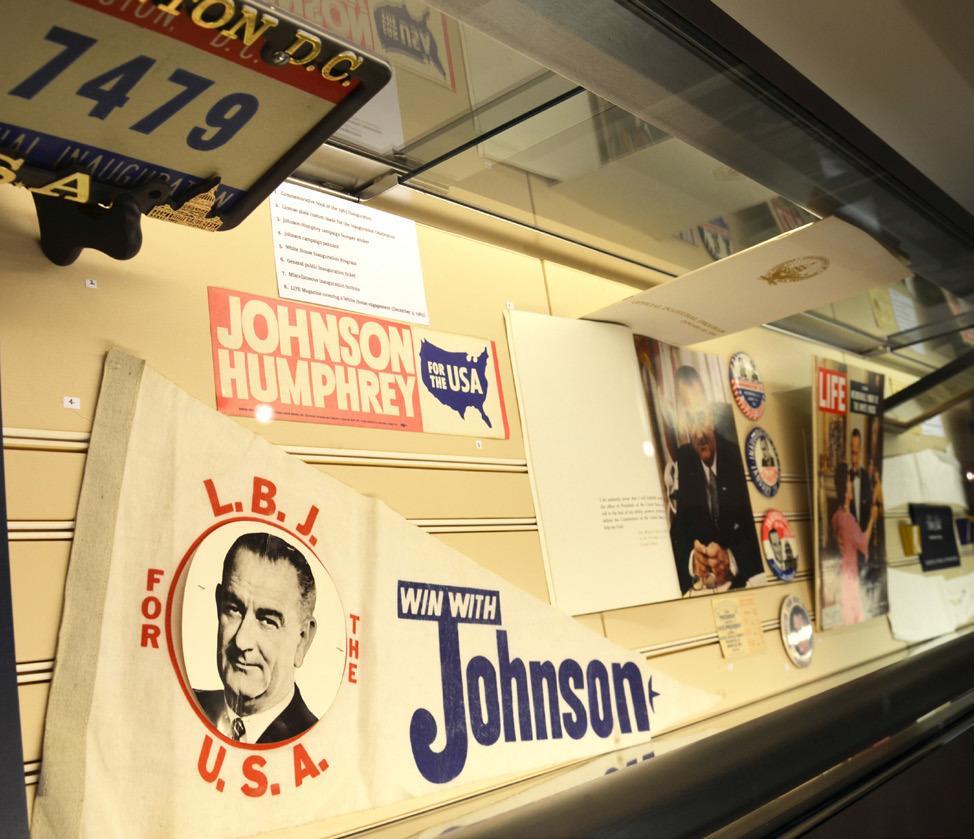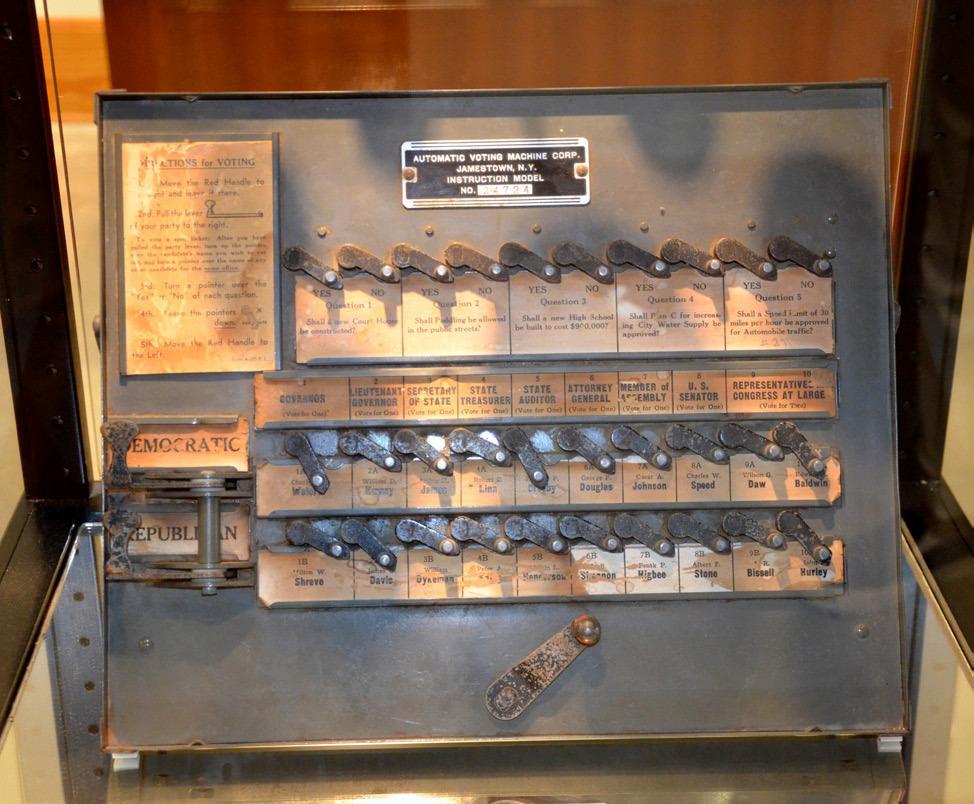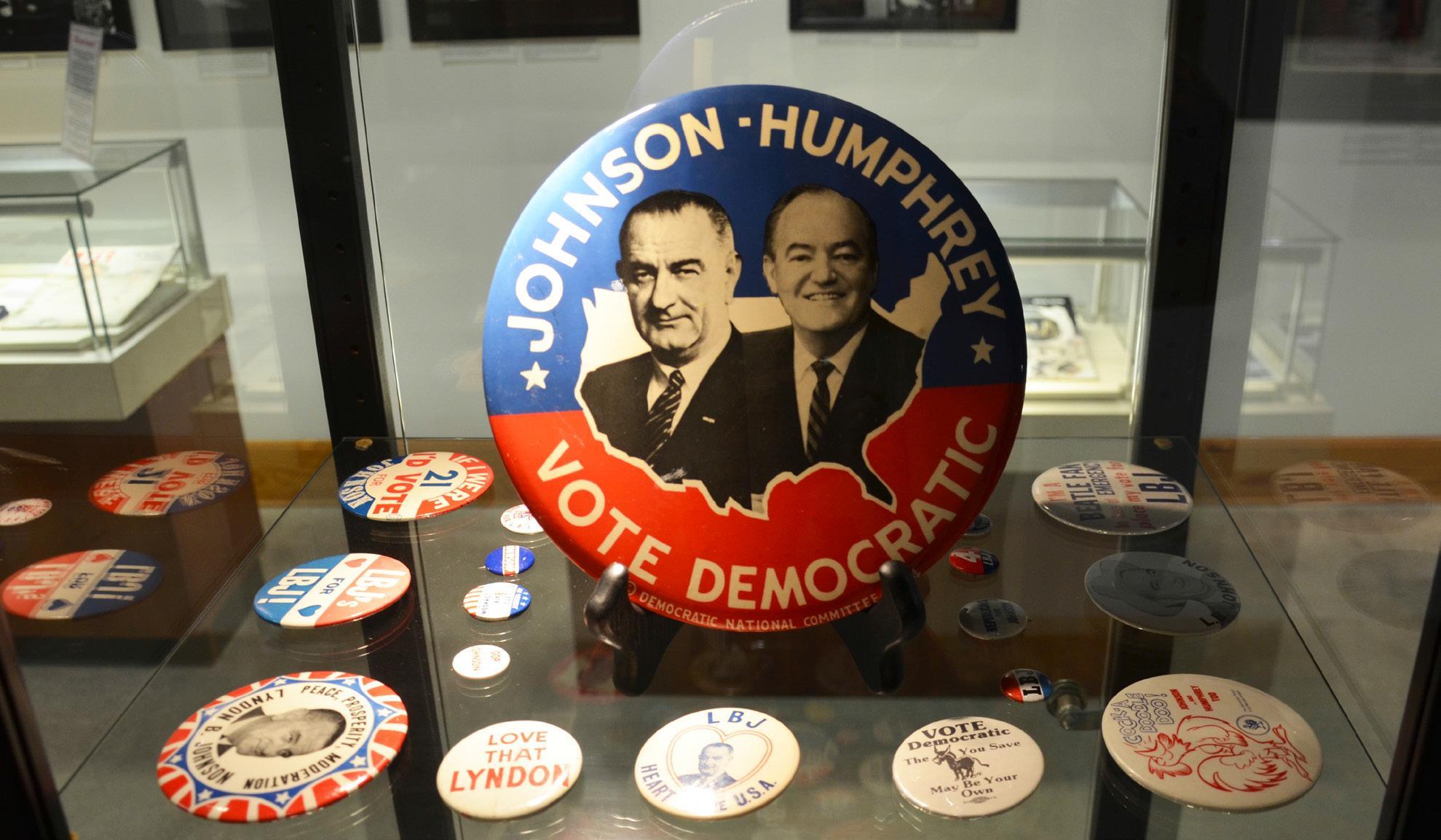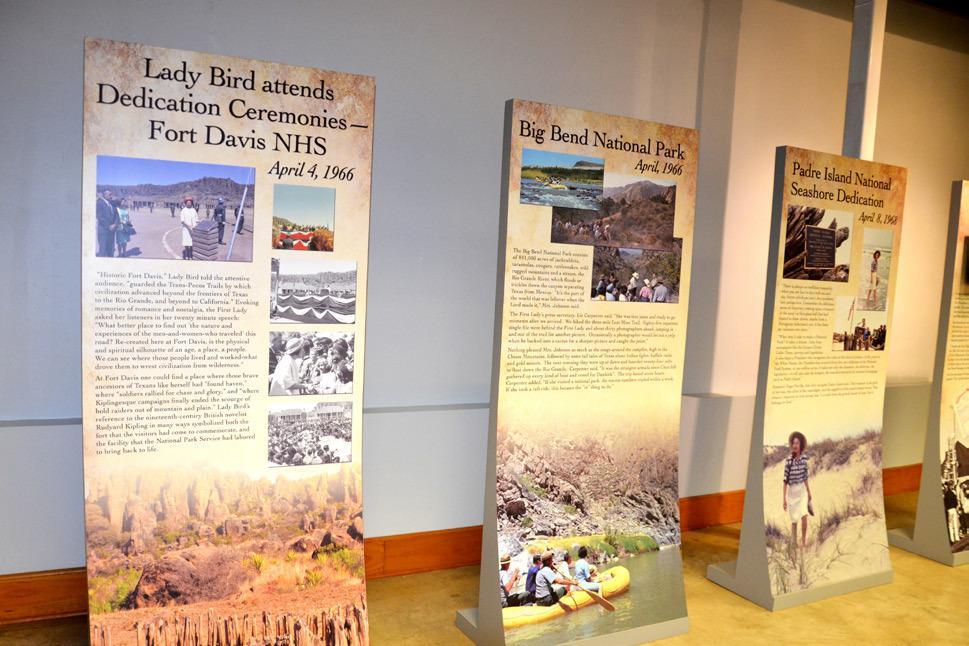


The LBJ Museum in San Marcos is featuring a voting rights exhibit as well as memorabilia from the life of President Johnson. Above, displayed are campaign buttons from the 1964 election. Middle, Johnson era artifacts greet visitors. Bottom, a voting machine from the 1930s is on view.
Daily Record photos by Shannon West

An exhibit at the LBJ museum looks at key moments in the Johnson family history.
Daily Record photo by Shannon West
LBJ Museum honors president, one of Texas State's favorite sons
The LBJ Museum, located at 131 N. Guadalupe St., currently offers visitors a chance to see a unique voting exhibit that explores the history of voting from the U.S. Constitution until 2000.
The museum is also permanent home to a myriad of memorabilia and artifacts pertaining to the late U.S. President Lyndon Baines Johnson.
LBJ Museum Manager Debby Butler said the new voting exhibit covers the entire history of voting rights in this country, including when the locally beloved Johnson, an alumni of Texas State University, signed the Voting Rights Act in the mid-1960s Butler said she thinks it’s important that people understand how hard people fought to secure voting rights for this nation, and how easily that right can be taken away.
She said it was valuable to note that the voting exhibit now on view was granted to the museum via grants from the Gilder Lehrman Institute of American History and the Annenberg Public Policy Center of the University of Pennsylvania.
The timing of the exhibit was perfect, Butler said, as the museum received the exhibit just in time for the anniversary of the signing of the Voting Rights Act by Johnson, on Aug. 6, 1965.
A lesser known but interesting fact referenced in the voting exhibit is that when voting started in this country, it was only available to landowners; This meant that black landowners could vote just after the constitution was created, and that right was later taken away.
She said the 17-year-old museum is a non-profit organization, so all of the exhibits are free. She said it receives the majority of its funding via grants, donations, the two conference room rentals in the upstairs portion, fundraisers and a small amount from gift shop sales. She added two of the biggest fundraisers are the golf tournament, held in April, and the annual Gala in January. Last year’s Gala guest speaker was American lawyer and politician Julián Castro, and this year’s Gala speaker is yet to be announced. The Gala will be held on Jan. 27, 2024.
On display here are the yearbooks from Johnson’s days at Texas State, then Southwest Texas State, which show his involvement in various, diverse organizations at the school. There are also photographs from Johnson’s time teaching at the segregated Hispanic school in Cotulla, which Butler said he did between his junior and senior year, because he needed the money. She added that the only requirement for teaching at that time was a high school diploma, but the job was not a far stretch for him as he was majoring in education.
“So, he saw firsthand, the year he was there, what segregation does to the community and what it does to the children,” Butler said. “We think that kind of influenced a lot of his 60's legislation … He was the only male teacher there, so they made him the principal.”
There are several photos of Johnson giving what Butler referred to as the “Johnson treatment,” which entailed grabbing his interlocutor and getting inches within their face.
“Johnson was 6’4, and he did not have any awareness of personal space,’ Butler said.
The museum has a display case of vintage Johnson campaign buttons and an old voting machine from the 1930s.
“This is my favorite display. I love the buttons,” Butler said. “They said so much about people.”
The museum is in possession of the desk that Johnson used to sign the Higher Education Act, and there are photos of him using it, displayed behind the desk.
According to the American Association of Collegiate Registrars and Admissions Officers website, the Higher Education Act is a federal law that governs the administration of federal higher education programs. It was meant to strengthen the educational resources of U.S. colleges and universities and to provide financial assistance for college students. It was passed in 1965 to ensure that every individual, regardless of zip code or income, has access to higher education.
Butler said Johnson liked to dance, and there are several photos of him dancing with famous individuals including Great Britain's late Princess Margaret, a moment featured in the television show, The Crown, and another with Carol Channing, the late Broadway and film star.
Butler said Johnson worked to complete John F. Kennedy's dream of putting a man on the moon, and there is a display case here that testifies to that endeavor.
“Johnson was involved in everything,” she said.
Also hanging on a wall of the museum, is a framed issue of the San Marcos Daily Record, known then as the San Marcos Record, announcing Johnson’s death. Butler said he was in San Marcos a week before he died, at age 64 on Jan. 27, 1973.
The second floor of the museum holds the voting exhibit, but the majority of the space here is dedicated to Claudia Alta “Lady Bird” Johnson, the former first lady.
Butler said Johnson was a congressman when the attack on Pearl Harbor occurred, which spurred his decision to join the military. She said he fought in the war for about eight or nine months before Roosevelt requested his return. During his time away, his wife took care of his office and finished out his ongoing campaign. Butler said that Lady Bird recorded a daily journal of her time in the office during that period.
Butler said the San Marcos Area Chamber of Commerce is hosting a business showcase Aug. 31, and the museum will have a display at the event.
“[It’s] all about how Johnson connected with San Marcos. He loved San Marcos, so he would come back all of the time,” Butler said.











